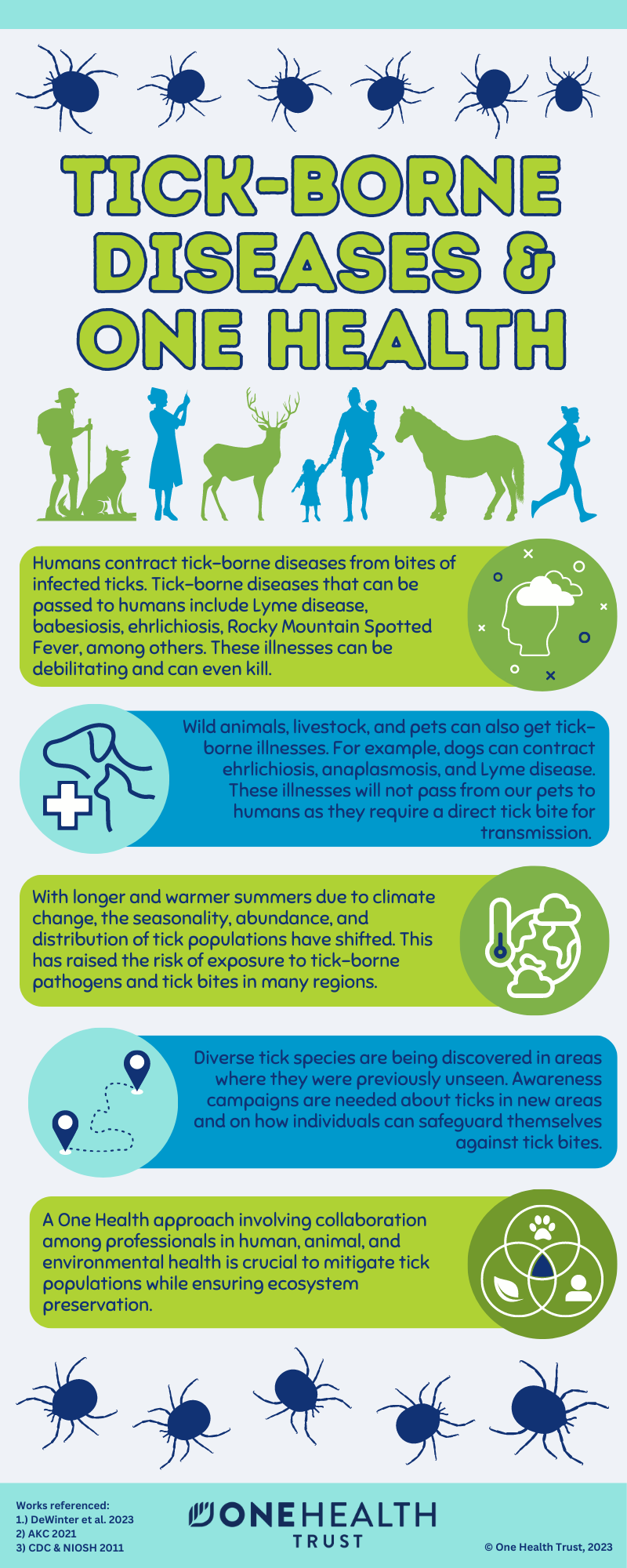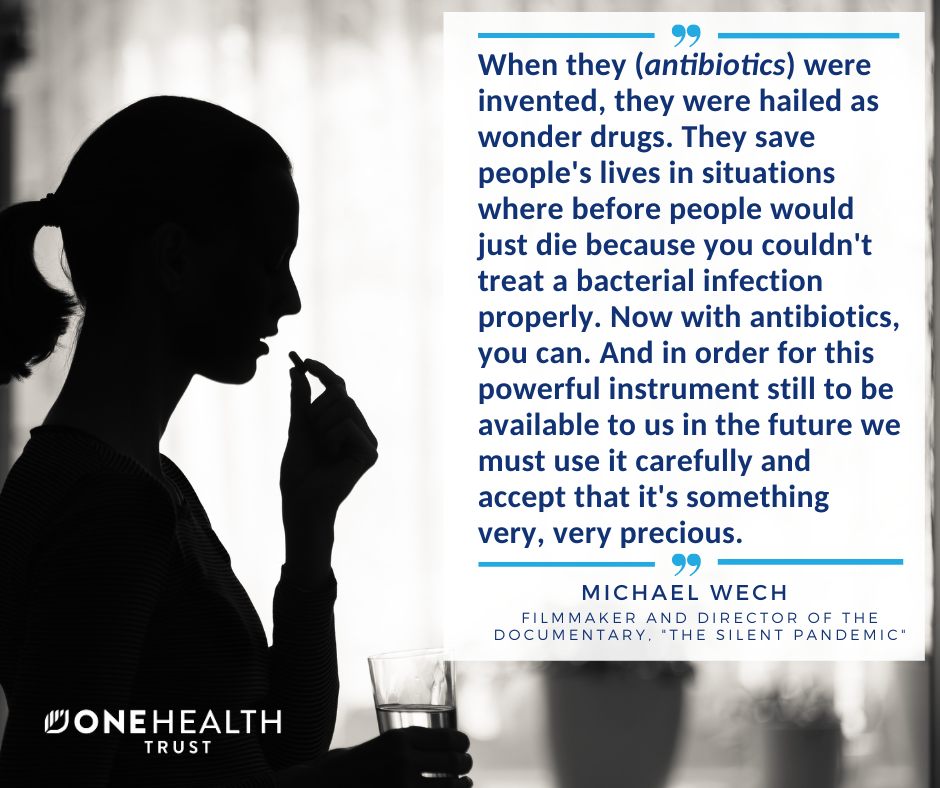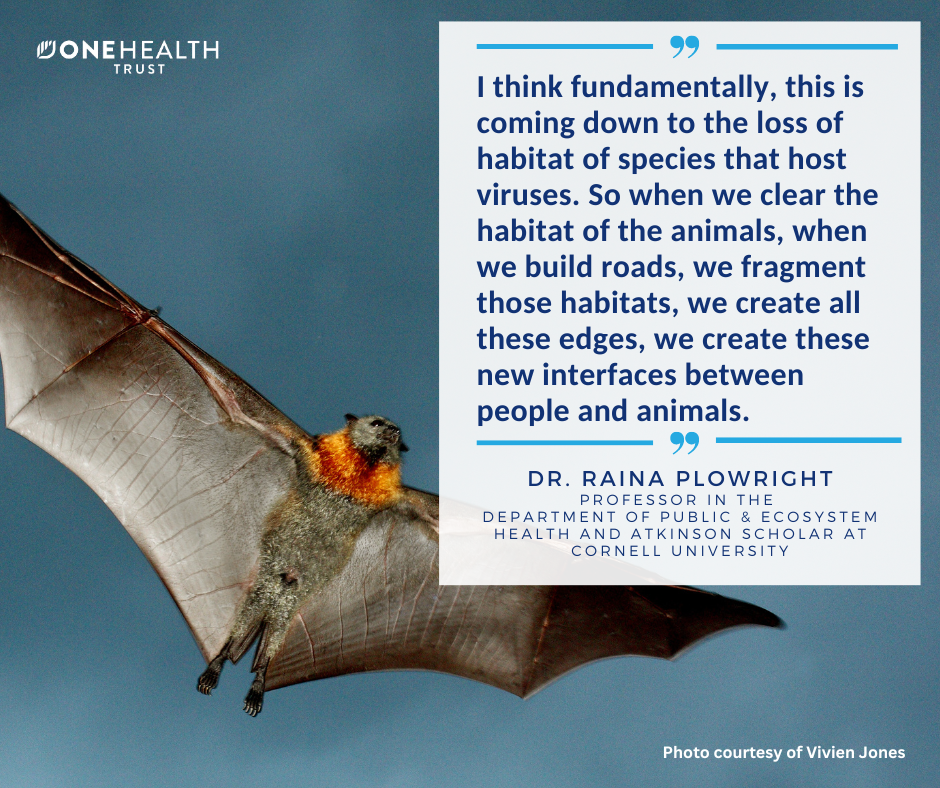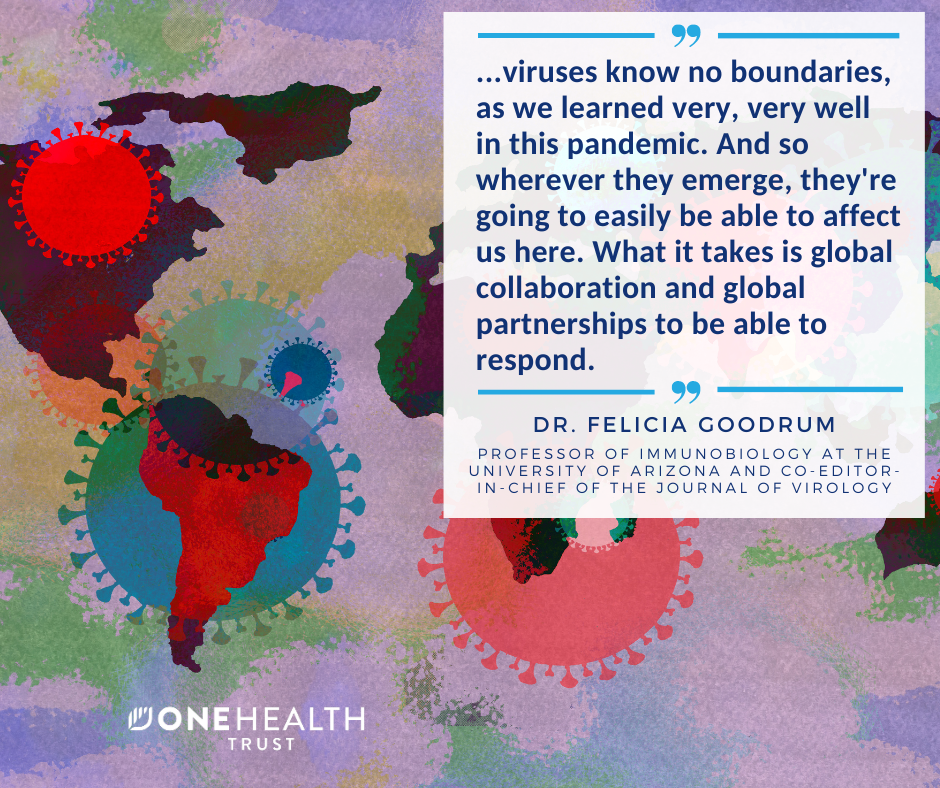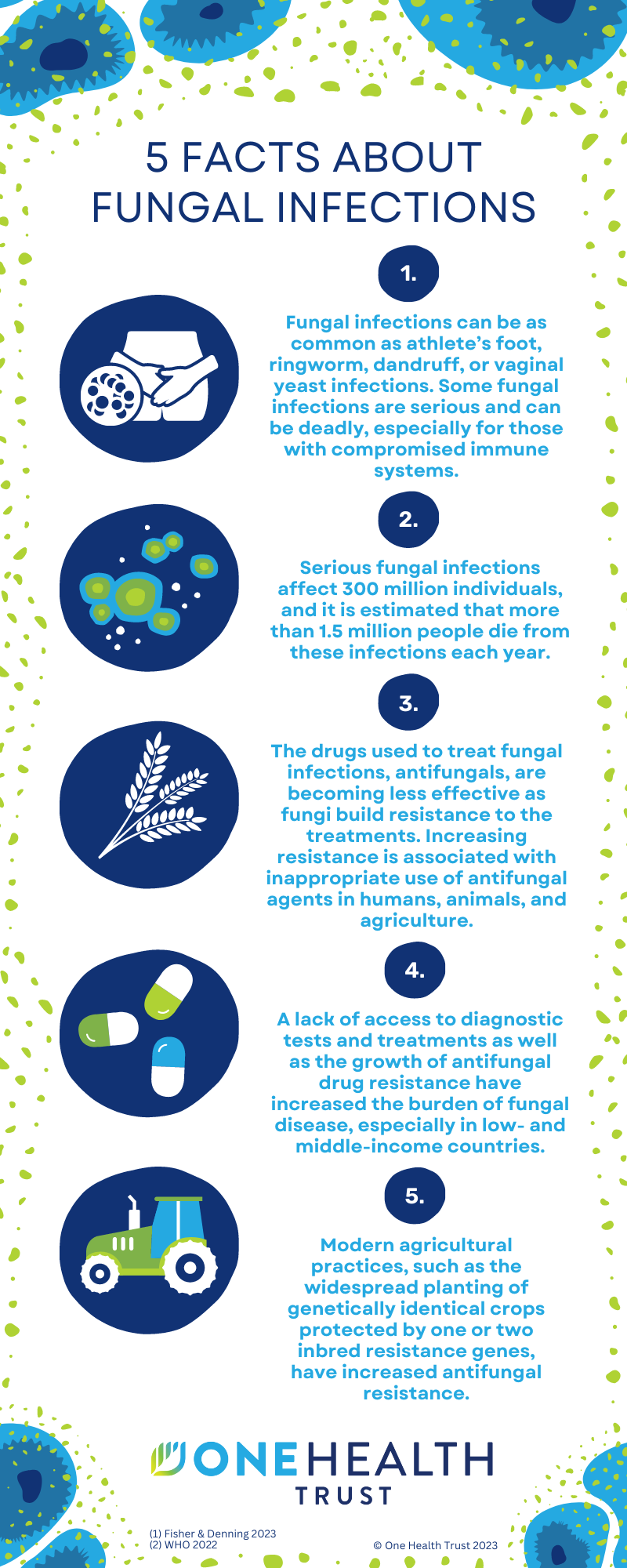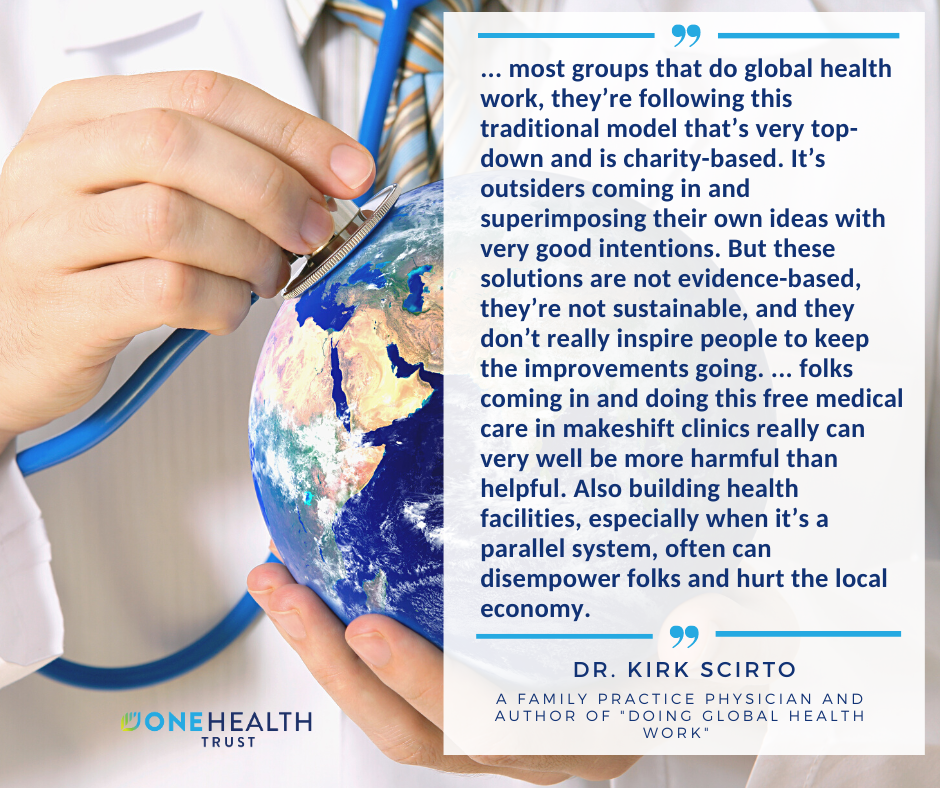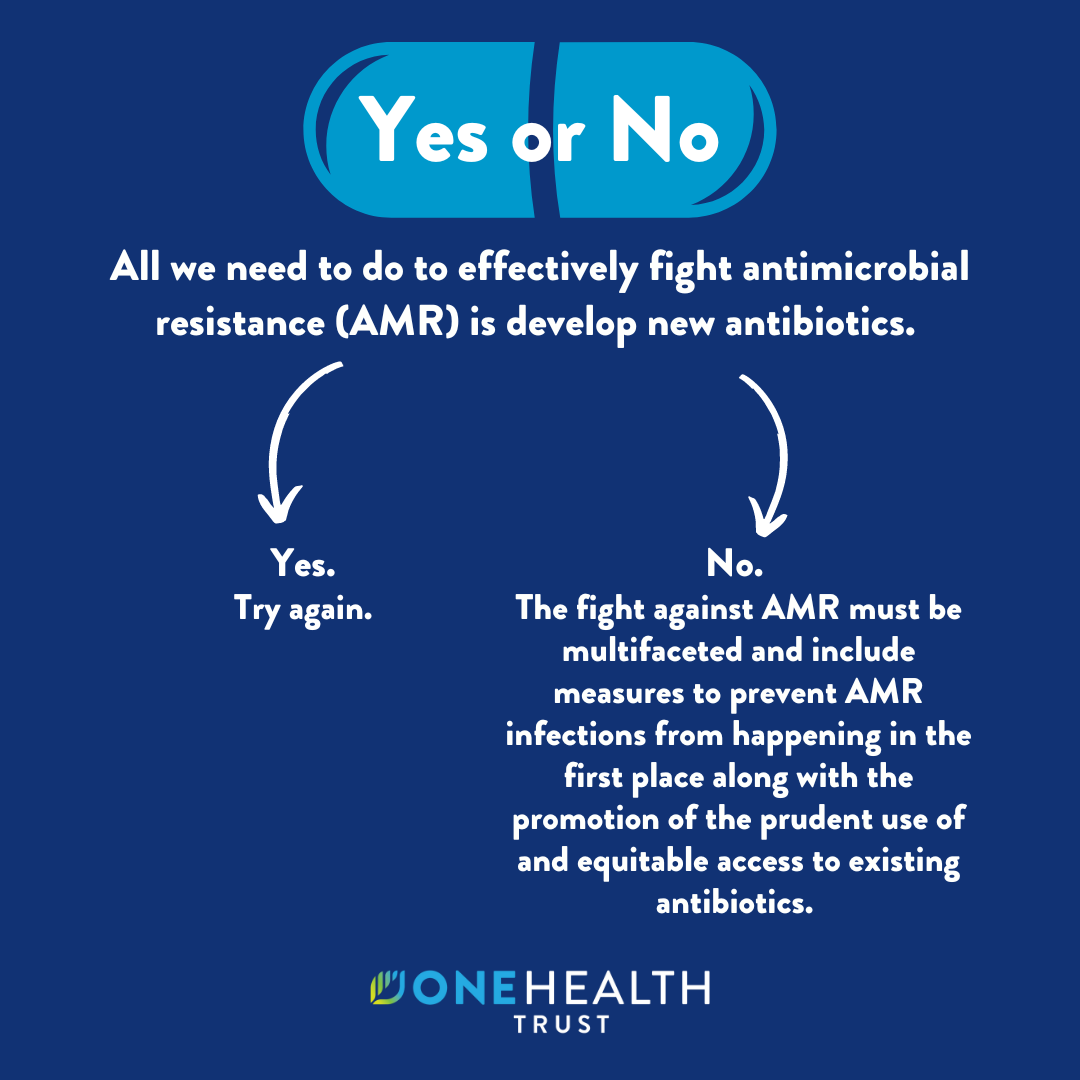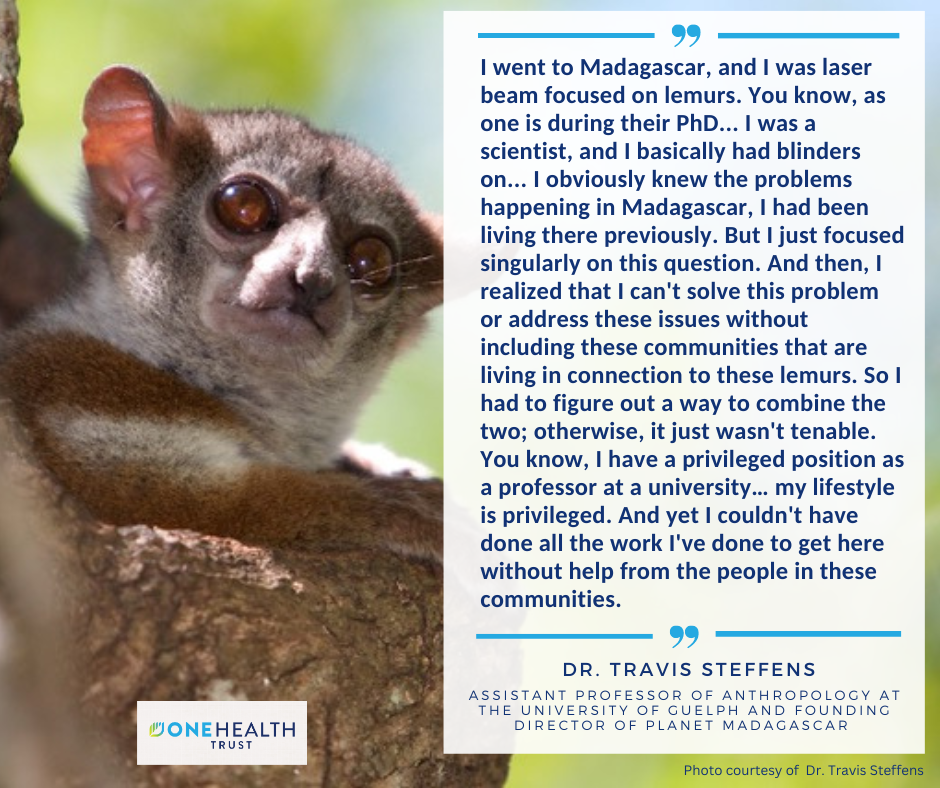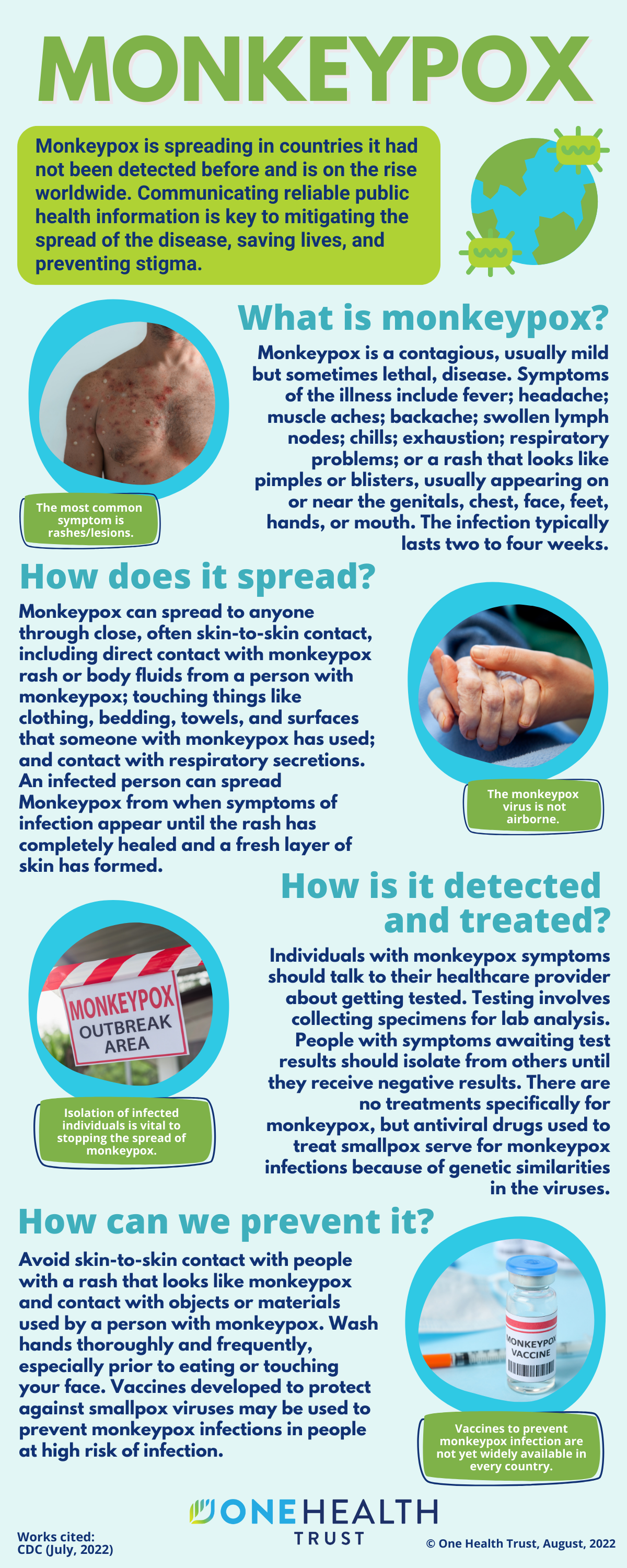
August 13, 2022
Monkeypox is spreading in countries it had not been detected before and is on the rise worldwide. Communicating reliable public health information is key to mitigating the spread of the disease, saving lives, and preventing stigma.
What is monkeypox?
Monkeypox is a contagious, usually mild but sometimes lethal, disease. Symptoms of the illness include fever; headache; muscle aches; backache; swollen lymph nodes; chills; exhaustion; respiratory problems; or a rash that looks like pimples or blisters, usually appearing on or near the genitals, chest, face, feet, hands, or mouth. The infection typically lasts two to four weeks.
How does it spread?
Monkeypox can spread to anyone through close, often skin-to-skin contact, including direct contact with monkeypox rash or body fluids from a person with monkeypox; touching things like clothing, bedding, towels, and surfaces that someone with monkeypox has used; and contact with respiratory secretions. An infected person can spread Monkeypox from when symptoms of infection appear until the rash has completely healed and a fresh layer of skin has formed.
How is it detected and treated?
Individuals with monkeypox symptoms should talk to their healthcare provider about getting tested. Testing involves collecting specimens for lab analysis. People with symptoms awaiting test results should isolate from others until they receive negative results. There are no treatments specifically for monkeypox, but antiviral drugs used to treat smallpox serve for monkeypox infections because of genetic similarities in the viruses.
How can we prevent it?
Avoid skin-to-skin contact with people with a rash that looks like monkeypox and contact with objects or materials used by a person with monkeypox. Wash hands thoroughly and frequently, especially prior to eating or touching your face. Vaccines developed to protect against smallpox viruses may be used to prevent monkeypox infections in people at high risk of infection.

